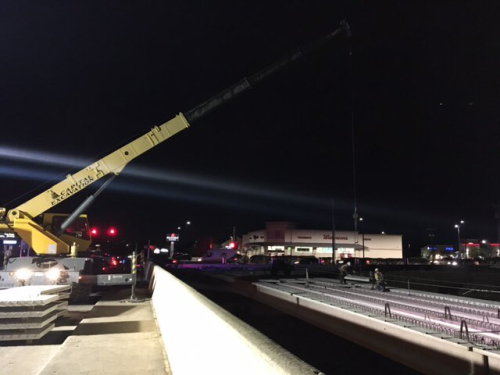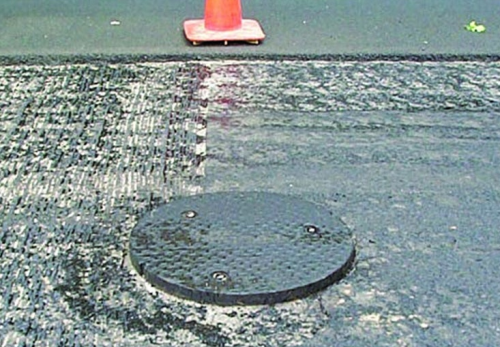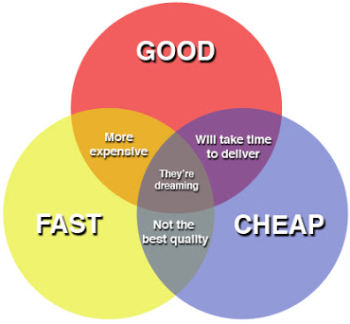|
||
|
|
||
This page last updated February 15, 2024 |
Road construction is a subject that generates a lot of complaints, criticisms, and Monday morning quarterbacking. Yes, construction is often inconvenient and frustrating, although sometimes it seems like many folks simply have a visceral reaction to the orange signs and barrels and perceive the amount of inconvenience and/or danger to be much more than it really is. Construction means change, and maybe it's just ingrained in human DNA to complain about change.
Regardless, as with most things, there are two sides to the story, and this topic is no exception. Believe it or not, the city, county, and state and their contractors do try to minimize the amount of disruption as much as possible, and it's in the contractor's own interest to get things done as quickly as possible so they can get paid and move on to other jobs. But some delays, inconvenience, and disarray is inevitable — that's just the reality of construction. Remember, "no pain, no gain."
Read on for answers and explanations to these frequent questions and complaints.
|
ADVERTISEMENT |
On this page:
- Inclement weather or its after-effects. Besides the obvious effects of rain, cold weather can also delay a project as asphalt and concrete often cannot be laid or poured in cold temperatures.
- Work cannot continue until concrete or pavement has cured.
- Some elements of the project need to be complete before others, which means that some sections inherently go dormant in the meantime.
- The contractor is waiting on a delayed utility adjustment or material delivery.
- An integral piece of equipment has broken-down and is awaiting repair.
- A required crew or piece of equipment is working another section of the project or a different project.
- Something was discovered on the work site that was unexpected that requires the contractor to wait while an engineering change is designed and approved.
Another reason you might see workers standing around is that they're waiting for something else to get done before they do their part. For example, a backhoe might be digging a trench, then the workers will come in and lay some pipe, or a truck is dumping a load (or on the way) that the workers will then come in and distribute, or a supervisor or inspector is checking something out and workers have to wait for the inspection to be completed. You only see workers for a second or two as you pass by, so you don't see the bigger picture of what's happening before and after that.
There are some people whose job often requires them to be standing around seemingly doing nothing, such as inspectors, engineers, and safety spotters. But rest assured — they're still doing something.
Local engineer Grady from the popular YouTube channel "Practical Engineering" does a great job of explaining this subject in his video "4 Myths About Construction Debunked", which I strongly recommend watching. (The link goes directly to the section on this topic.)
As any project manager worth their salt will tell you, there are three constraints for completing any project: speed, quality, and cost. The catch is that you can only manage two, and adjusting one affects the others.
Of course, it's important for all road projects to be done well ("good"), so that leaves fast vs. cheap. Since most projects have limited funding and are by necessity low-bid ("cheap"), that means they can't be done as fast as we'd all like. To do them faster would require either (a) higher taxes/tolls, or (b) fewer needed projects getting done.
Due to funding and resource availability, as well as manageability, road work is often done in sections. So in some cases, it seems like a specific road has always been under construction, but in reality, different sections have been under construction and completed at different times over the course of many years, sometimes back-to-back, but often with breaks in between. Over time, however, all of that blurs together in one's memory giving the illusion of constant construction.
Also, big projects often have to be done in phases. For example, the first phase of a major freeway interchange project might relocate and improve the frontage roads. Then, after that is completed, the next phase might be to build the first few flyovers of the interchange. Then the next phase might be to widen the freeways through the interchange. Then finally the remainder of the interchange flyovers would be built. These projects might be done back-to-back, or overlap a bit, or maybe have gaps between them depending on funding availability. While this causes the overarching project to be dragged-out longer than anyone would like, it's often the best way to get it done as waiting until the entire thing could be fully-funded would increase the overall cost as construction costs tend to increase over time.
First of all, TxDOT, for example, is an agency of 12,000+ people, and they hire hundreds of contractors and subcontractors each with plenty of workers to build their projects. Together, they have the resources and experience to manage multiple projects at once, and contractors are quite adept at allocating equipment, crews, and subcontractors to multiple projects without impacting the progress on any of them since any delays directly affects their bottom line. Large city and county governments have similar abilities and depth.
Even with those resources, road construction just takes time for the reasons explained under "Why does construction take so long?" above. So even if the city/county/TxDOT and their contractor only worked one project at a time, it would still take about the same amount of time to complete that project.
That aside, let's look at the question on its face: If road construction was done one project at a time, it would take even longer to get things done. First of all, how would you determine the constraints for your one project? Would it be a specific road, an arbitrary section of the city or county, a whole city or county, a region of the state, the whole state...? For argument's sake, let's say it's by county. In Bexar County in mid 2024, there were 78 TxDOT projects underway with an average duration about 1.75 years each. So, if each project were worked one at a time, it would take over 136 years to complete all of those projects that, when worked simultaneously, will all be done in just a few years. And that doesn't include the projects done by the county and various cities — would their projects have to wait when TxDOT had one underway and vice versa? There is simply no way to ever get all the needed safety, congestion, and maintenance improvements done on that kind of schedule. On top of all that, construction costs typically increase every year, so waiting to build projects just increases their cost and means people would have to wait even longer for congestion relief, safety improvements, or even basic maintenance.
Hopefully at this point, you can see the idea of waiting until one project is finished before another starts is absurd, but if not, you can take heart: there are enough projects underway at any one time that, when one project is starting up, another project somewhere is wrapping up.

However, the reason is quite simple: manholes, storm drains, driveway aprons, and so forth are all built to the planned level of the final road surface. However, that final layer of pavement (usually a few inches worth) is not laid down until the very end of the project. Therefore, when a road is still under construction but open to traffic, there will be an offset between the temporary road surface and those other structures.
So why not lay down the final layer of pavement before letting traffic use the road? Essentially, it's the same reason why you don't put down carpet or flooring in a house that's still being built — you don't want it to be damaged by the ongoing work. Also, traffic driving on the subsurface layers of pavement while it cures can cause it to settle and/or deform slightly, so it makes for a better final product to wait until the subsurface layers have settled and fully-cured before applying to top layer. That allows the top layer to smooth-out any imperfections that develop in the lower layers during that initial use.
So why not install the manholes and other structures at the lower level and raise them up during final paving? This is certainly possible, but would be expensive to do, especially given the short amount of time the grade offset is needed. It would be like putting a roof on the first story of a planned two-story house, then moving it to the top of the second story when it's built. Pretty dumb, huh?
For the record, this is not something that's only done in Texas. This is the practice pretty much everywhere in the US and even overseas (I've personally seen it in Germany and England.) In short, it's just how it's done. However, they typically try to minimize the danger and annoyance by building small asphalt ramps around these hazards to reduce the potential impact of hitting one. In the end, though, it's the driver's responsibility to avoid these hazards by being careful and observant and slowing down.

Other sites of interest
|
|
TxDOT San Antonio "Go Ahead!" - What’s the Hold-Up? Why the Best-Laid Plans Often Go Astray https://txdotsanantonio.blogspot.com/ |



